Tech
How LinkedIn Automation Saves up to $4,000 a Month and Skyrockets Conversions
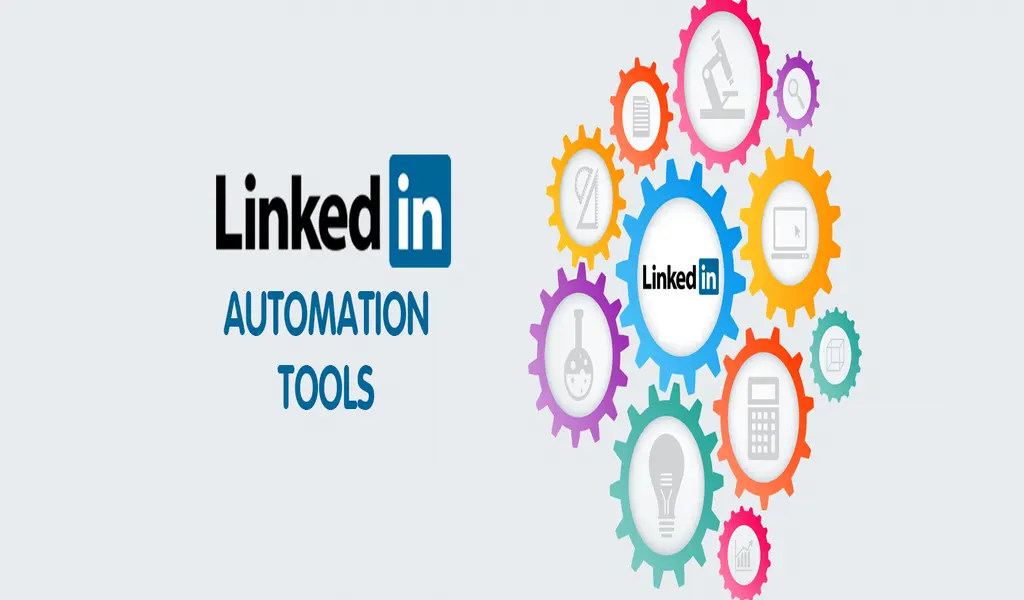
LinkedIn Automation – Did you know that one single tool can change your B2B work routine completely? It can transmit you from a hot office to a comfortable lounge on the coast of an ocean. Make you switch from Passat to Panamera.
Your biggest dreams can come true, if you know how to value your time and how to really earn millions in crazy B2B environment.
So, what on earth is LinkedIn automation? How can it help you grow and hit revenue numbers?
Automating your outreach on LinkedIn is crucial to the efficiency of your workflow and scaling your company. Automation is your huge time and cost saver.
Many automation tools have been developed to help you perform various tasks, from sending personalized message requests and follow-ups to managing leads and conversations like in CRM.
Marketing and outreach automation helps you save valuable time and leverage the full potential of personalized messages and campaigns for maximized conversions & ROI.
Automation is what truly gives you the sought-after relaxation. Finally, so much spare time that can be spent on various more important things, like:
- Thinking up outreach strategy (where your creativity is needed)
- Writing outreach messages and hone writing + sales skills
- Communicate with leads and actually close deals
- Analyze campaign performance and fine-tune your prospecting strategy
It’s so easy to do all these, having leads generated for you on autopilot.
No hustle, no bustle. Let’s see how LinkedIn automation changes the work routine of a sales rep forever.

- Where should you start?
- What advantages does LinkedIn automation provide?
- How do you ensure the success rate of your automated campaign?
All that and more will be answered in detail in this article.
What can LinkedIn automation do?
First, let’s highlight that LinkedIn is still one of the two best channels for B2B sales. It’s full of decision makers who can jump into chats easily.
Social sales are still a super complimentary to email outreach. It’s a warm environment, unlike email – a perfect place to entice your leads through communication & content.
Well, actually, LinkedIn is what helped Closely team come from 0 to $1,5 mln in a year. Outbound sales can become your goldmine.
And the platform is growing year by year, look:

Of course, email rocks, but it rarely works on its own. The most effective outreach strategies work for multiple channels. If leads don’t reply to email – reach them on LinkedIn, and vice versa.
Ok, you’ve got it. LinkedIn is still worth it. But what makes effective automation?
Efficient LinkedIn automation consists of automated connection requests, message sequences, and other engagement with your leads.
Putting it simply, you build a drip campaign, indicating time intervals, and then everything happens on autopilot. All you need to do is check your dashboard after a while to see which campaign performed well and which one didn’t work at all.
Even the simplest LinkedIn automation allows you to connect with prospects, target your audience and personalize all communications with them, monitor your campaign’s results, and completely streamline your entire lead generation process – all on autopilot!
LinkedIn automation is a huge help every step of the way: whether you’re looking to connect with hot leads, strike up a conversation with your connections, or close a sale, automation handles the hard part and lets you reap the benefits.
We’ve calculated how many hours daily on average a leadgen specialist spends on routine repetitive tasks.👇🏾
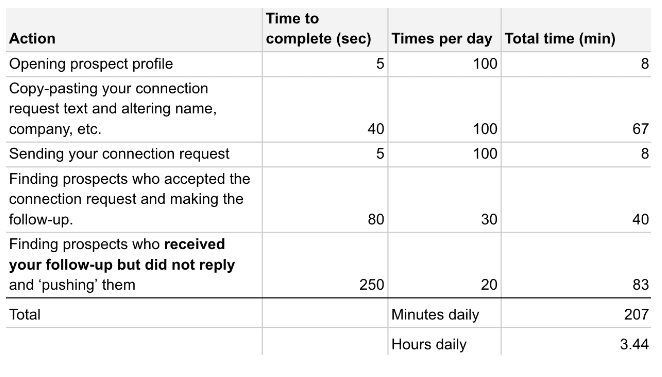 37,5% of all leadgen tasks are routine manual jobs 😱 :
37,5% of all leadgen tasks are routine manual jobs 😱 :
- finding people
- opening profiles
- sending messages
- creating a Google Spreadsheet file, filling in data
- tracking inbox
- finding those who didn’t reply, follow-uping them
Since the average salary of a B2B sales specialist in Europe amounts to € 4,000, it’s only rational to switch to automation that costs $50 a month.
If your lead generation is done by your sales team, you can save them 4 hours per day spent on mundane, repetitive tasks that can easily be done by a computer.
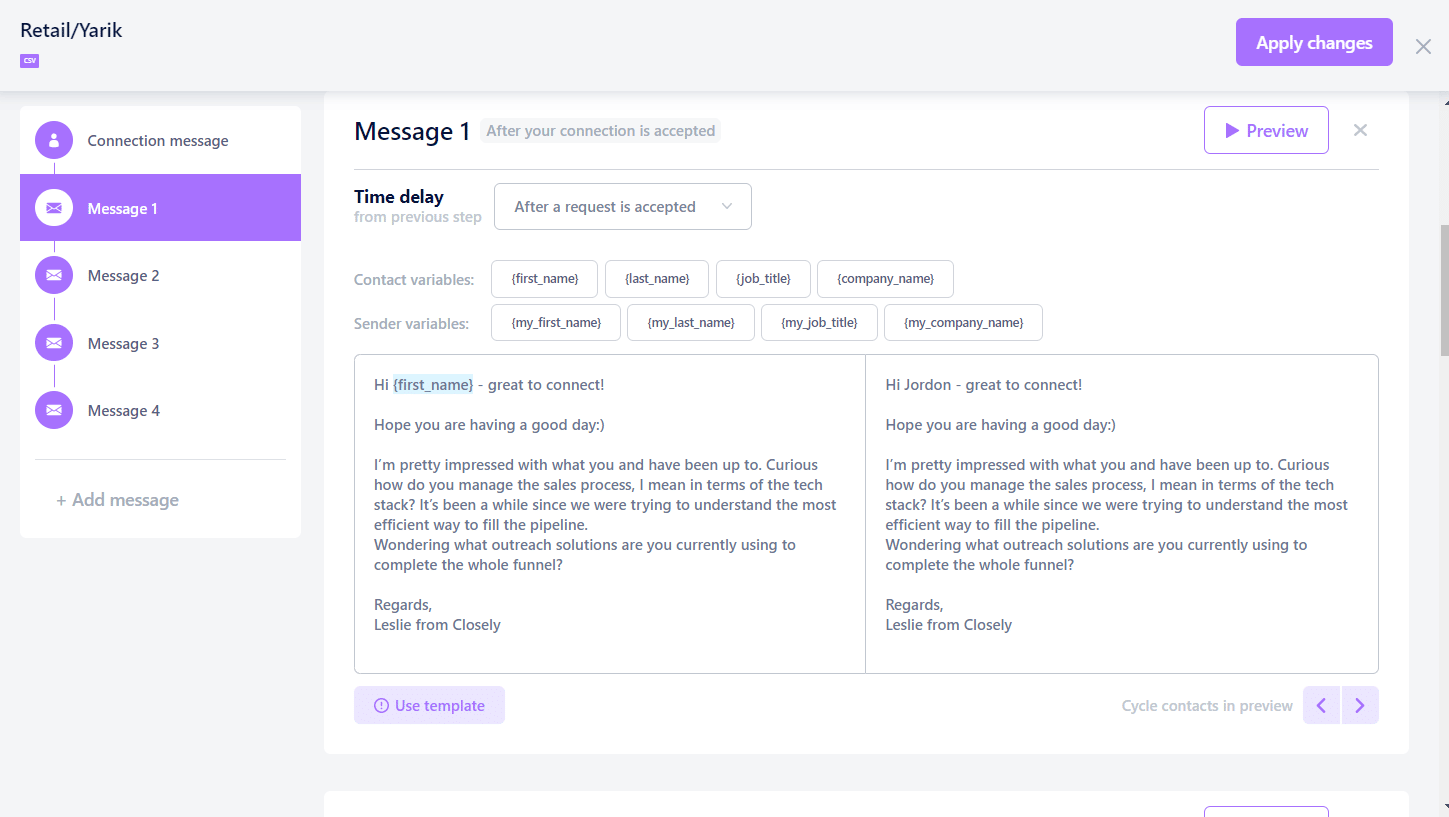
Above is a simple connection campaign in Closely, an all-in-one automation tool for LinkedIn. It works in the cloud and is a perfectly safe, reliable and most advanced solution on the market.
Using it, you ramp up your sales numbers over an unbelievably short period of time. Because you create a campaign once, and the messages are sent on autopilot.
Isn’t it amazing? You expand your outreach without lifting a finger. Then you just go to your built-in Inbox and continue conversation with leads who replied. Simply amazing!
It also lets you build smart audience lists – you upload leads from a CSV file or directly from LinkedIn, providing links to LinkedIn events, posts, groups. The tool pumps in LinkedIn profiles of your leads and then you just write messages and start your campaign. Easy-peasy!

Closely lets you build targeted lead lists and thus get in touch with people who really need your solution, right now. Watch to learn more:
https://www.youtube.com/watch?v=rYPPIAXwMWI – Webinar
https://www.youtube.com/watch?v=FTDggU7yNes&t=74s – Video guide on how to engage leads through content on autopilot
Safety
So, what do we have up to this point?
- You can install and try for free one of the most robust LinkedIn automation to free your sales team of repetitive tasks
- It works in cloud
- It can generate leads for your completely on autopilot – all that remains is to work with generated leads, guiding them further to a conversion
So, how safe is it?
Safety issues are paramount – you don’t want your LinkedIn account to get into jail. Who would?
Well, don’t worry here. To fully protect your account, Closely:
- uses a dedicated IP-address that’s based in your own country
- lets you schedule your actions within your prospects’ working hours and days
- uses a warm-up feature. It means it won’t pump out hundreds of messages. We will be automating the same amount of actions a person would do and then gradually increase the number.
Still have questions? We have a safety guide to help you get the hang on LinkedIn safety.
So, in a few words, it’s the safest tool on the market. You can join the community for B2B sales fans and founders on Facebook and ask real users. They all use Closely 😊😊
Connection requests and messages
Imagine how long it would take to tailor connection requests to hundreds of leads by hand! Well, there’s no need to – you can rely on LinkedIn automation to personalize messages based on your criteria (based on a mutual group, event, post, industry, job title, etc.)
and send them to thousands of potential customers at once. That way, you can reach your lead outreach goals fast, plus boost conversion rates!
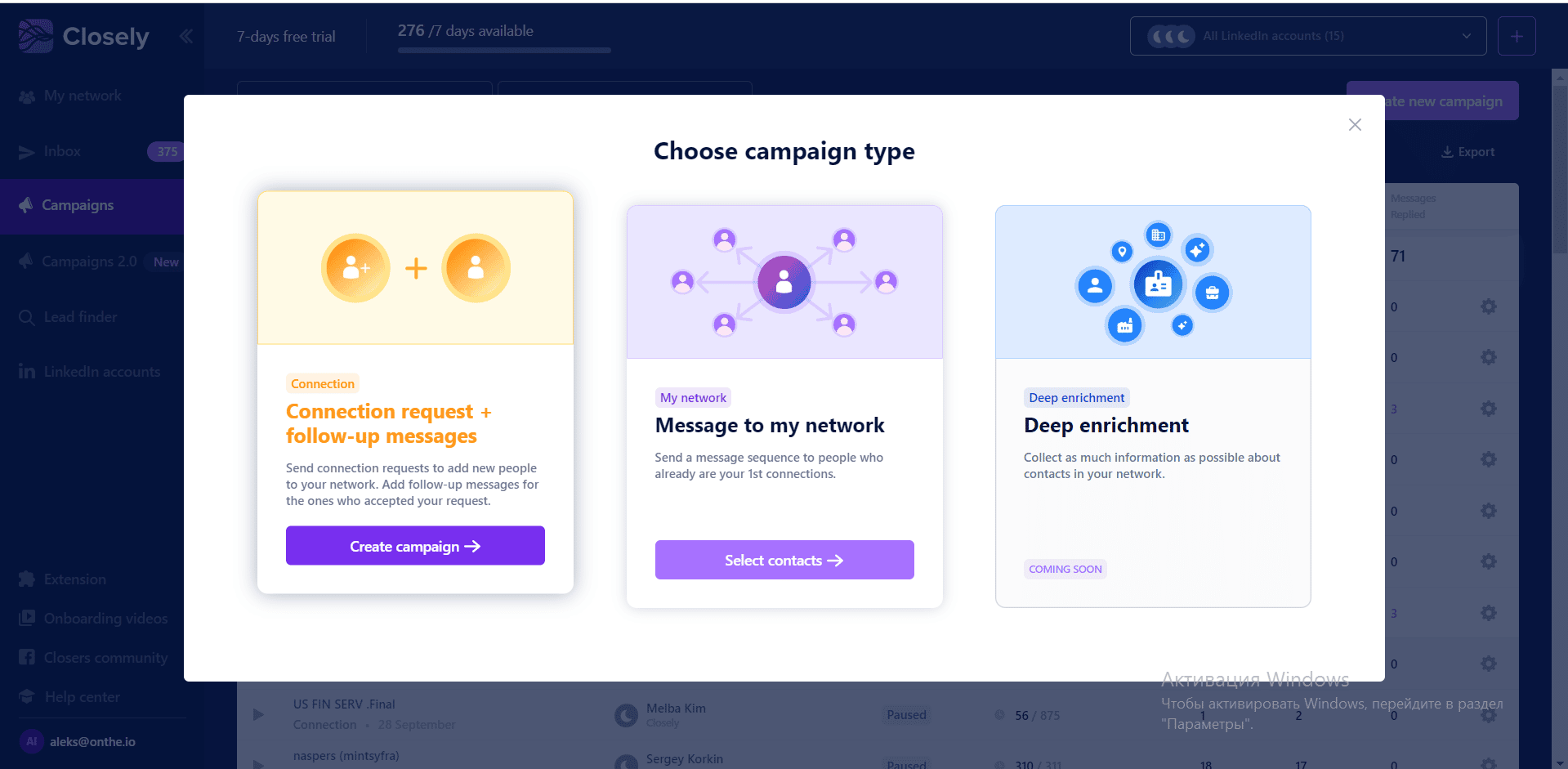
You can make the most out of the information on the prospect’s profile by having an automation tool implement it in the points of your personalized message.
This includes their name, location, job position, company, and more. Personalization is a highly effective tactic in marketing, so make use of it!
One important thing to mention, however, is that sending messages (and performing any other automated LinkedIn activity) has to be done in humanly possible intervals, otherwise LinkedIn will detect that you’re using third-party software in a ‘spammy’ way, which will get your account restricted.
Your tool of choice shouldn’t just send all the connection requests in one go, but rather extend the process with a few breaks so as to mimic human behavior and throw LinkedIn off the track.
Closely, for example, never send messages in bulk right off the bat. First, it goes at the lowest number of messages sent per day, and then it increases this number gradually.
It’s done to ensure your account won’t act weirdly, out of the blue. This way Closely mimics human behavior completely to guarantee safety of your account.
Cloud-based automation tools are better for the safety of your LinkedIn account – keep this in mind also.
Need a helping hand with writing your first outreach messages? We have 50+ best-performing hand-picked templates created by Closely team.
Follow-ups
You’ve sent that spectacular personalized connection request, but your lead is silent. A devastating feeling, but LinkedIn automation can solve this too!
Using publicly available data in your follow-up personalization, you can create a compelling follow-up that will increase the chances of your message being seen. Show the potential customer how you’re going to address their pain points. Be creative! (But maintain the balance).
Your campaign doesn’t only have to target cold audiences. You can set up automated message sequence to check up on existing customers so that that spark in your connection doesn’t dim.
Inform your current customers about your product updates. Or reach out to leads from your network – the Network Management feature in Closely is designed to help you with this. Not everyone will buy just after you got connected. Some will find interest later – you have to wait till the opportunity presents itself.
Did we mention that Closely is free to try?
Plus you get 50 credits for free that you can use to open prospects’ contact data, like emails or phone numbers.
Try Closely Linkedin Automation Tool
Inbox with CRM features
That’s really even not it.)
Closely has an embedded inbox that has CRM features in it. It’s simply your LinkedIn network, only now it’s manageable.
Add tags to certain conversations, notes to keep important information accessible to all your sales team members. Improve your workflow – all for free. Inbox and Network Management are FREE Closely features.
Personalized messages in Closely
LinkedIn automation is very powerful in terms of saving time.
While the automation tool is sending out personalized messages and emails based on data about your prospects, you’re working on other, more significant tasks (this, in turn, means more revenue for your business!).
Just after the obvious time-saving advantage, Closely offers another extremely useful functionality – personalization. It offers to use variables to make your message sound personalized rather that robotic.
Why is it important?
The importance of content personalization for the success rate of your campaigns, conversion rates, ROI, and the effectiveness of virtually every aspect of your prospecting cannot be stressed enough.
Making your prospects feel like their needs are being specifically addressed and tailoring your marketing around them makes it more likely for them to convert and stick around as long-term customers!
Easily build customer loyalty through personalization accomplished with a few clicks. Just fill in needed data in your CSV file – Closely will auto populate variables with it.
Automation is the ace up your team’s sleeve
When leveraging all the possibilities granted by LinkedIn automation, you’re allowing your sales team to reach new heights and your profits to soar, as you’re implementing more effective marketing & outreach strategies to automatically target your audience.
increase conversions and keep customers engaged, while you and your team are busy improving your products, creating new solutions and driving more revenue for your business.
And to top it off, automation tools can integrate with other marketing tools, which allows you to manage a multi-channel marketing campaign beyond LinkedIn.
Closely transforms your outreach process as a whole, with automatic outreach, messages, and campaign management – master its capabilities to generate leads, convert more potential customers into current customers and boost your sales.
LinkedIn actions that you can automate in Closely – here’s what you need to know
1. Automated LinkedIn connection requests
This is where it all starts – reaching out to and connecting with prospects. Closely allows you to send personalized connection requests and schedule follow-ups for better open rates. Use dynamic variables in your messages that hyper-target your prospects for higher response rates.
To set up automated messaging, you can upload your audience from a CSV file or LinkedIn group/event/post, select a connection campaign type and start your campaign!
2. Automated prospect data enrichment – Closely Surfer
For an even more targeted approach, you may want to know the prospect’s email or phone number, and it’s not always displayed on their profile.
Closely Surfer is a free extension that bypasses this issue and fetches publicly available data from LinkedIn, such as the prospect’s email. Profile scrapers can find both personal email addresses and professional ones that aren’t overtly visible.
The scraped profile data (emails and beyond) can then be put into a spreadsheet and uploaded to your CRM.
3. LinkedIn prospecting message sequences
You’ve got a network full of potential customers – now it’s time to automate LinkedIn prospecting to turn those dormant leads into customers!
Make a search on LinkedIn and segment your results to narrow down quality leads, export the profiles to a tool and send your message sequences.
You can also upload a CSV file with your leads’ profiles or paste a link to some LinkedIn group, event or post.
Choose from Closely prospecting message templates or write your own message contents, then automate your prospecting process.
4. Automated recruitment messages
On top of its benefits for prospecting, LinkedIn automation is a big helping hand to recruiters or businesses looking for investors.
Conveniently filter your search, craft a connection message, and set up personalized message sequences – all to kick your recruitment campaign into full gear!
5. Campaign Analytics
Easily measure how well your campaigns are doing, how many prospects have accepted your connecting request or replied — you can get a full run-down of your LinkedIn growth with the help of Closely.
View all the data relevant to the effectiveness of your LinkedIn outreach campaigns and get a clear picture of what needs to be tweaked for higher conversions and returns.
6. Automated skills endorsements – Closely Campaigns 2.0
Everyone loves a little endorsement – so why not automate skills endorsements for your network?
This will make it more likely for the prospect to connect with you and be more willing to consider your solution – a great way to reel in those leads!
7. Automated LinkedIn likes
You can keep up your connection with your prospects by regularly dropping a like on their posts (after all, it’s a very gratifying way for a potential customer to see that you follow their updates and care about what they post!).
Whether we like to admit it or not, we are more inclined to engage with a person that we see has liked our post than if they hadn’t.
You can set up these automated like campaigns for everybody in your network, and there couldn’t be anything simpler than liking your connections’ posts with an automation tool.
The LinkedIn algorithm really values user engagement and it pushes content that lots of users have interacted with to a wider audience.
Even if it’s just one interaction, a user’s profile may be displayed on another person’s feed just because they liked or commented on another creator’s post.
This way, automating likes or going the extra mile – it can directly lead to the growth of your account, since it’s now more likely for many other users to see your profile and your content interactions.
The bottom line here is to automate your engagement on LinkedIn for faster growth, stronger prospect or customer relationships, and engagement in return, which will additionally boost your profile.
How to launch a successful automated campaign on LinkedIn
Manage every aspect of your campaign, from searching for leads to contact to analyzing test results and evaluating campaign improvements, effectively with LinkedIn automation.
Here are the steps you need to take to launch an automated campaign on LinkedIn.
– Choose a tool according to your goals:
A great campaign starts from a great tool. You’ll need to do research on the available LinkedIn automation tools, compare them in prices and features, and know what criteria you’re looking for.
A good automation tool will have the following:
– The ability to customize connection requests and message sequences;
– Automated analytics;
– LinkedIn account security;
– Advanced list building criteria;
– Option to sort contacts and assign tags
– Email base and profile scraping;
– User-friendly interface and intuitive use;
– Reliable customer support system;
– And others, depending on your needs, goals, and budget. Pick your tool thoughtfully, and you’ll set yourself up for a swift ride to LinkedIn growth.
Now you’re ready to set up your personalized campaign!
You can let the tool customize messages based on where the lead is in your sales funnel, whether you’re in a mutual group, based on their LinkedIn activity, and much more – without having to do any manual work!
Get great campaign results by utilizing as many personalization points as possible with your LinkedIn automation tool.
Create separate sequences for prospects that may be more interested in your product and for those who need that extra nudge; automate follow-ups (consider writing multiple, and schedule them after a given number of days of no response from the prospect) that get your message seen.
After your campaign has been running for a few weeks, you can use your tool to view results analytics.
Evaluate your prospect’s responses to your messages, and adjust your approach to generate higher prospect interest.
See how you can improve your campaign to reach your desired goals: provide a link to your website, ask for a smaller commitment (like joining the group or reading content).
Effective LinkedIn automation essentially boils down to using the right automation tool in a way that won’t get your account suspended due to high activity, and that will take your marketing to a whole new level.
You may want to manage multiple campaigns at once, experiment with different approaches and message templates. Run further tests to derive the best results, divide the prospects who have accepted request into groups, and launch your next campaign with even more data up your sleeve.
All this is made possible with a tool with sufficient workflow management capabilities and sophisticated analytical features – other crucial aspects to keep in mind when deciding on an automation tool.
If you have a clear outline of your goals, what tasks you want to automate, what you want to manage, and how you want to go about tracking your prospecting process, picking the right solution for you becomes heaps easier.
We’ve provided you with info on the most robust automation solution. We’ve tested a lot and we can clearly see the winner.
Conclusion
LinkedIn automation offers a wide scope of possibilities to optimize your digital marketing and facilitate business growth.
Not only does automating manual tasks such as sending connection requests, message sequences, email campaigns, and liking posts save time, it also makes for a more efficient workflow with greater ROI, more conversions, stronger customer connections and loyalty and more sales.
The ability to automatically connect to your target audience, narrow down search results, put together spreadsheets with customer data for your CRM, and effectively analyze the results of your test results and campaign outcomes gives you the upper hand over competitors and lets you maximize the benefits of your marketing strategy.
With all these important features in mind, it’s crucial to decide on an automation tool that’s right for you.
Closely is that very missing puzzle that turned the workflow of so many sales and growth teams into an enjoyable journey. Sell easily, dream bigger and hit your revenue numbers way faster!
The power of automation to bolster your LinkedIn sales
> Try Closely today
The Closers Community
Subscribe to Youtube channel
Guides and articles – sales hacks and strategies
Related CTN News:
Elon Musk to Become Twitter’s #1 Influencer in 2023
IP Routing: What Is It, and How Does It Operate?
Elon Musk Says User Signups At An All-Time, Highlights “Everything App” Features

Tech
US: A Judge Mandates that Google Allow Competing App Stores to Access Android
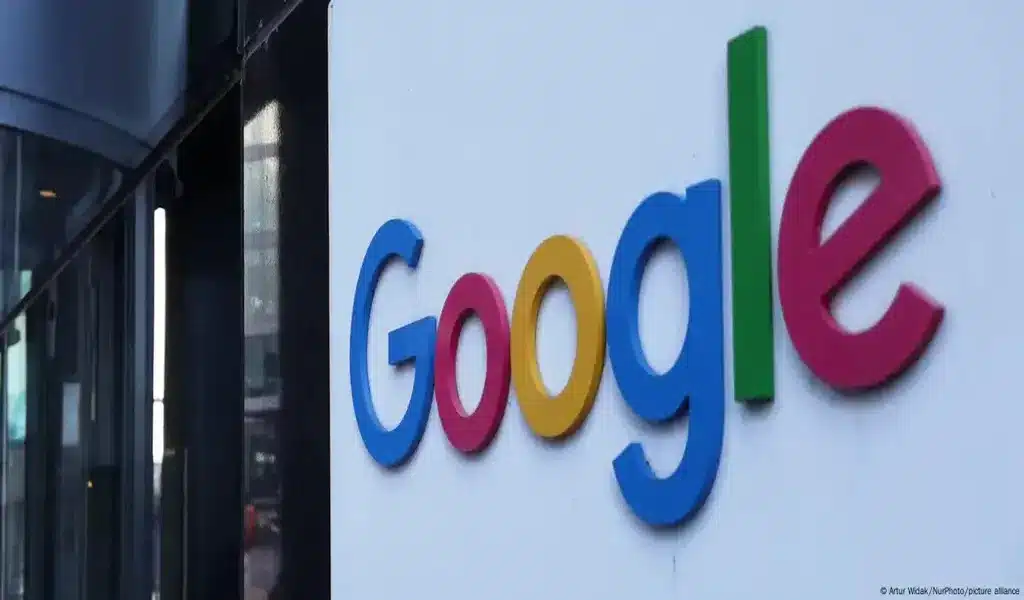
(VOR News) – The ruling is that Google, the greatest technology firm in the world, is required to make its Android smartphone operating system available to merchants that supply applications that are in direct rivalry with Google’s. This decision was reached by a judge in the United States of America.
The Android Play store, which is owned and operated by Google, was found to be an example of an illegal monopoly arrangement by a jury in the state of California on Monday. The finding was reached by a jury. Monday is the day that this decision was come to.
An earlier federal judge ruled Google’s search engine illegal.
This finding, which came after that decision, has forced the company to suffer yet another setback. As a result of the corporation having already encountered its initial obstacle, this decision has been established. This particular decision was made by the judge during the month of August, when the month was in progress.
In light of the fact that the decision was made, what exactly does it mean that the choice was accepted?
In accordance with the verdict, Google is obligated to make it possible for users to download Android app stores that are offered by third-party competitors. For a period of three years, the corporation is prohibited from imposing restrictions on the usage of payment mechanisms that are integrated into the application.
In addition, it is important to keep in mind that Google does not possess the right to impose restrictions on the utilization of ways to make payments online.
Additionally, the verdict makes it unlawful for Google to give money to manufacturers of smartphones in order to preinstall its app store. Smartphone manufacturers are prohibited from doing so.
Furthermore, it prevents Google from the possibility of sharing the revenue that is generated by the Play store with other companies that are in the industry of delivering mobile applications.
In addition to this, the court has mandated the establishment of a technical committee that will be made up of three different people chosen at random.
The committee will be responsible for monitoring the implementation of the reforms and finding solutions to any disagreements that may occur as a consequence of the implementation of the reforms while they are being implemented. This task will fall under the committee’s purview so that it may fulfill its duties.
However, certain components were allowed to be put into action until July 1st, despite the fact that the judge’s statement suggested that the ruling would take effect on November 1st. The statement was the basis for the ruling, which ultimately became effective.
Particularly, I wanted to know what Google’s reaction would be.
There is a fact that Google does not adhere to this directive, which has been brought to their attention. This document argued that the alterations that the judge had ordered to be made would “cause a range of unintended consequences that will harm American consumers, developers, and device makers.”
The judge had ordered the modifications to be implemented. The alterations were to be carried out as indicated by the judge’s ruling. The judge made it clear that he expected these revisions to be carried out in accordance with his guidance.
The company’s regulatory affairs vice president, Lee-Anne Mulholland, provided the following statement: “We look forward to continuing to make our case on appeal, and we will continue to advocate for what is best for developers, device manufacturers, and the billions of Android users around the world.”
On average, over seventy percent of the total market for smartphones and other mobile devices is comprised of mobile devices that are powered by the Android operating system. Both smartphones and other small mobile devices are included in this category.
In the event that the Play app store continues to be shown on the home page and that other Google applications are pre-installed prior to the installation of the Android application, smartphone manufacturers are entitled to install the Android application at no cost at their discretion.
Additionally, the Android application can be installed on devices that are manufactured for smartphones.
SOURCE: DWN
SEE ALSO:
Over The Planned “Link Tax” Bill, Google Threatens to Remove NZ News Links.
Tech
WhatsApp Now Features a “Mention” Tool for Status Updates and Stories.
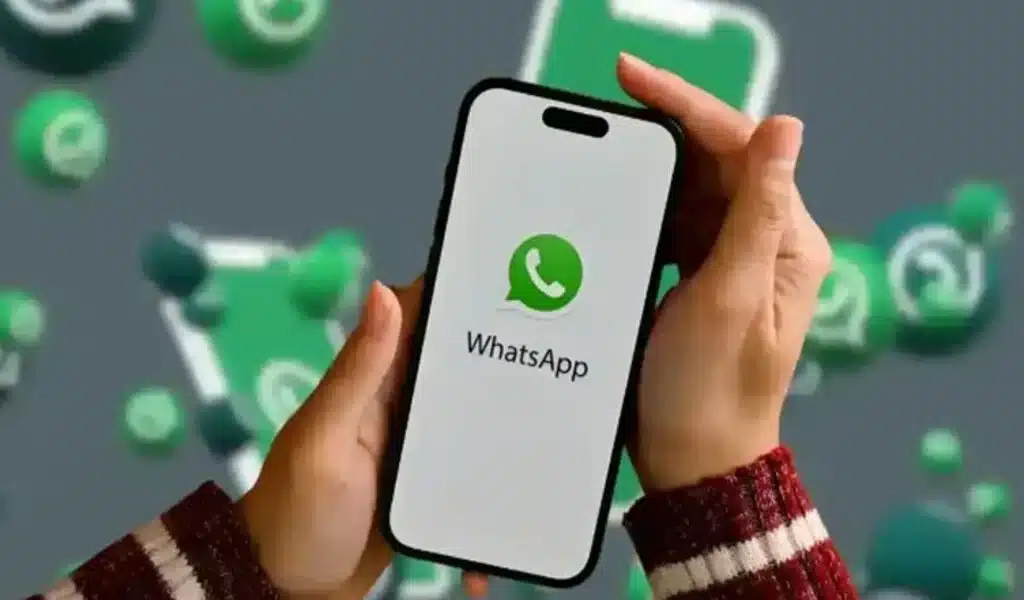
(VOR News) – Those who use WhatsApp now have the ability to mention other people in their stories or status updates as a consequence of a feature that was only recently enabled on the platform.
Previous to this point, this capability was not available. It wasn’t until quite recently that this capability became available to the public.
According to the information that was provided by the company, users now have the opportunity to tag close friends in their stories, and the person who is mentioned will have the option to go back and re-share an earlier version of that story. This information was provided by the company. The corporation was kind enough to reveal this information to us.
Because of a new feature that has been added to the WhatsApp app, users now have the opportunity to like individual stories and status updates.
This capability was previously unavailable to WhatsApp users.
A significant amount of progress has been made in this context. Alternative readers now have the chance to “like” a work, which is comparable to liking a post on Facebook. This feature was introduced in recent years. When compared to the past, this is a tremendous shift.
At one point in time, viewers were only permitted to observe the total number of views that a particular story had gotten. These restrictions were eliminated in later versions of the software.
Additionally, it is essential that the likes and reactions to a story be kept anonymous during the entire process. One of the factors that contributes to the general mystery that surrounds this characteristic is the fact that this is one of the elements.
The person who brought it to the attention of others is the only person who will be able to judge who enjoyed it and who did not care about it. These individuals will be able to make this determination.
A notification will be issued to the individual who was referenced earlier in the sentence and who was named in the story or status update that was discussed. A notification of this nature will be sent to the individual via WhatsApp.
This message will be sent to the user in question whenever that person makes a reference to another person while they are in the process of elaborating on a narrative or updating their status. You will receive a notification alerting you that you have been tagged in the narrative.
This notification will be delivered to the person who receives this message. In addition, students will be provided with the opportunity to re-share the tale for themselves.
It is important to note that if the names of individuals who have been referenced in a narrative or a status update are included in any of these, then the names of those individuals will not be accessible to any third party through any of these. In light of the fact that the identities of those individuals will be concealed from public disclosure, this is the condition that will be required.
While WhatsApp recently made the announcement that it will be incorporating this functionality, it is highly likely that not all users will have access to it at the same time.
This is despite the fact that WhatsApp recently made this announcement.
Despite the fact that WhatsApp has only recently made a public announcement that it will move forward with the deployment, this is the situation that has presented itself.
As soon as a short period of time has elapsed, access will be made available to each and every person on the entire world.
Additionally, WhatsApp has hinted that new functionalities might be introduced to the status and updates tab in the future months.
The purpose of these capabilities is to provide users with assistance in maintaining healthy connections with the individuals who play a vital role in their living experiences. This is done in order to give users with support in maintaining close relationships with the folks who are the subject of the inquiry.
It is with the purpose of supporting users in successfully keeping close ties with the individuals in question that this step is taken.
SOURCE: DN
SEE ALSO:
Over The Planned “Link Tax” Bill, Google Threatens to Remove NZ News Links.
Accenture and NVIDIA Collaborate to Enhance AI Implementation.
Tech
Over The Planned “Link Tax” Bill, Google Threatens to Remove NZ News Links.
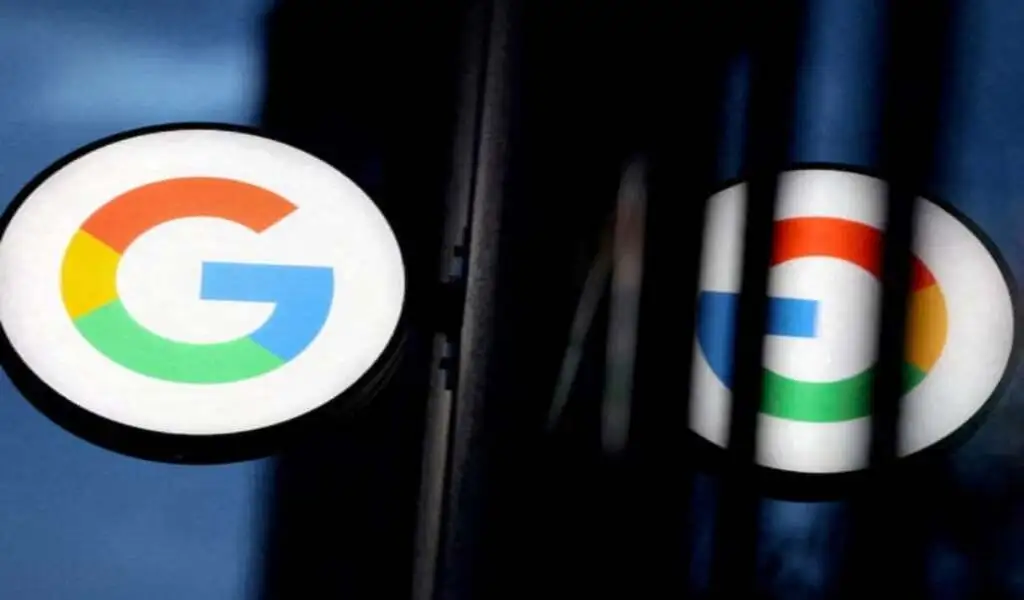
(VOR News) – Google has sent a strong message to the New Zealand government, threatening to stop boosting local news content should the Fair Digital News Bargaining Bill become law.
The law, put up by the Labour government and backed by the coalition in power at the moment, mandates that digital companies such as Google pay back news organizations for links to their material.
News publishers, on the other hand, charge the tech giant with “corporate bullying.”
Google says this measure may have unanticipated effects.
Google New Zealand’s country director, Caroline Rainsford, voiced her worries that the law, which is being referred to as a “link tax,” is not doing enough to support the media industry in New Zealand right now.
She underlined that Google would have to make major adjustments if the previously mentioned law were to pass, including cutting off links to news articles from its Search, News, and Discover platforms and cutting off financial ties with regional publications.
According to Rainsford, similar legislation has been proposed and approved in other nations including Australia and Canada, but it has not been proven to be effective there and breaches the principles of the open web.
She drew attention to the fact that smaller media outlets will be most negatively impacted, which will limit their capacity to reach prospective audiences.
Google says its alternative options will protect smaller, local media from negative effects.
Conversely, it conveys apprehension regarding the possible fiscal obligations and vagueness of the legislation, which it feels generates an intolerable level of ambiguity for enterprises functioning within New Zealand.
The New Zealand News Publishers Association (NPA) has reacted to Google’s warnings by alleging that the internet behemoth is using coercive tactics.
They specifically contend that the need for regulation stems from the market distortion that Google and other tech giants have created, which has fueled their expansion into some of the most significant corporations in global history.
The legislation aims to create a more equal framework that media businesses can use to negotiate commercial relationships with technological platforms that profit from their content.
New Zealand Media Editors CEO Michael Boggs stated that he was in favor of the bill, citing the fact that Google now makes a substantial profit from material created by regional publications.
He also emphasized that the use of artificial intelligence by Google—which frequently makes references to news articles without giving credit to the original sources—highlights the significance of enacting legislation.
Paul Goldsmith, the Minister of Media and Communications, has stated that the government is now evaluating various viewpoints and is still in the consultation phase.
He stated that the government and Google have been having continuous talks and will keep up these ongoing discussions.
However, not all political parties accept the validity of the Act.
The ACT Party’s leader, David Seymour, has voiced his displeasure of the proposal, saying that Google is a game the government is “playing chicken” with. He threatened the smaller media companies, saying that they would suffer from worse search engine rankings if the internet giant followed through on its promises.
Seymour contended that it is not the government’s responsibility to shield companies from shifts in the market brought about by consumer preferences.
The things that have happened in other nations are similar to what has happened in New Zealand.
Google has agreements with a number of Australian media firms that are in compliance with its News Media Bargaining Code. These agreements contain provisions that permit an annual cancellation of these agreements.
Due to the government’s decision to exempt Google from the Online News Act, the company has committed to supporting news dissemination by contributing annually to the Canadian journalistic community.
The New Zealand measure is consistent with global approaches aimed at regulating the relationships that exist between technology corporations and media organizations.
It’s hard to say what will happen with the Fair Digital News Bargaining Bill as the discussion goes on. Google and the New Zealand media landscape are preparing for what might be a protracted legal battle.
SOURCE: TET
SEE ALSO:
Accenture and NVIDIA Collaborate to Enhance AI Implementation.
-

 News3 years ago
News3 years agoLet’s Know About Ultra High Net Worth Individual
-
Entertainment2 years ago
Mabelle Prior: The Voice of Hope, Resilience, and Diversity Inspiring Generations
-

 Health4 years ago
Health4 years agoHow Much Ivermectin Should You Take?
-

 Tech2 years ago
Tech2 years agoTop Forex Brokers of 2023: Reviews and Analysis for Successful Trading
-

 Lifestyles3 years ago
Lifestyles3 years agoAries Soulmate Signs
-

 Movies2 years ago
Movies2 years agoWhat Should I Do If Disney Plus Keeps Logging Me Out of TV?
-

 Health3 years ago
Health3 years agoCan I Buy Ivermectin Without A Prescription in the USA?
-

 Learning3 years ago
Learning3 years agoVirtual Numbers: What Are They For?